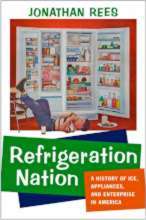HVAC books
Choosing HVAC textbooks
How to find the best books for training, career and reference
Image by Hermann Traub from Pixabay
Choosing HVAC textbooks
How to find the best books for training, career and reference
Image by Hermann Traub from Pixabay
Text Stephen Peters August 15 2016, updated February 27 2020
Both reference books and textbooks can be expensive, make sure you buy the books you need and only the books you need. In some cases the previous edition of a book can be both cheaper and suitable for your needs. Follow our guide and choose the best books for you.
Disclosure: This and other pages on this site contain affiliate links which may pay us a commission should you make a purchase after following a link. This is partly how this site is funded and does not cost you anything extra on the items you buy.
EPA section 608
Technician Certification for Refrigerants, 3rd edition
Author Howard Styles
Many EPA section 608 course books simply concentrate on the goal of passing the tests and do not provide any more information than is required for the test. Once a student has passed then they are going to have to learn the EPA course material in more detail if they want to actually become a technician. Typically the student discards any section 608 training materials once they have their EPA card. This book is intended to cover the EPA tests in considerably more detail, teaching the student the underlying concepts of HVAC and leaving the student with both a greater level of knowledge as well as a high test score. This book is highly recommended and will continue to be useful following the tests.
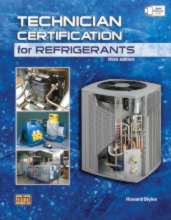
Publisher American technical publishers
Published April 05 2015
ISBN 9780826907264
Pages 268
Format Paperback
Read sample chapters:
Chapter 6Section 608 Certification Exam Preparatory Manual, 9th edition
Covering the core topics as well as type one, two and three certification this is a short but dense book that should take you all of the way towards certification. If you are new to the HVACR field you may need to supplement this book with others that provide a more detailed introduction to topics such as refrigerant names and classifications, vacuum levels, and refrigerant cycles. The intent of this book is simply to help with passing the EPA certifications. This edition was rewritten for 2019 and subsequently revised into this V2 edition to bring it fully up to date with the EPA rule changes for the start of the year. This book is also available in a Spanish translation (Seccion 608 de la Agencia de Protección Ambiental (EPA) Manual Preparatorio Novena Edición V2)
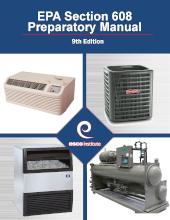
Publisher ESCO institute
Published August 11 2019
ISBN 9781930044609
Pages 32
Format Paperback
Fundamental Refrigeration, 1st edition
Author George Gunter
Fundamental refrigeration is intended to be an initial introduction to students who are not familiar with HVAC systems. The text keeps theory and mathematics to a minimum for easy access to the basic refrigeration concepts but covers much of the information EPA section 608 students must learn. Although the book does not cover the full scope of the EPA tests it is useful as an introduction to HVAC topics. In the book R-22 refrigerant in high pressure systems is used for the examples which should be useful for all of the tests. As the book is now over a decade old the price for a new copy on Amazon is now reasonable which is why we are recommending it.

Publisher ESCO institute
Published March 01 2007
ISBN 9781930044234
Pages 170
Format Paperback
Read sample chapters:
Chapter 1NATE ICE exams
HVAC Control Systems, 1st edition
Author Ronnie J. Auvil
Clearly written with many great diagrams and pictures this book should be on the shelf of any HVAC trainee technician. Intended to be an introductory text for students the author adds in clearly explained new concepts as the reader progresses through the book. Each chapter ends with a series of review questions to ensure you have fully understood the material.
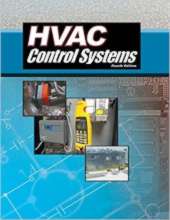
Publisher American technical publishers
Published June 30 2017
ISBN 9780826907790
Pages 576
Format Hardback
Heat Pump Operation, Installation, Service, 1st edition
Author Randy F. Petit, Sr., Turner L. Collins
Heat pumps are clearly an area of HVACR that all technicians will need a very strong understanding of to pass tests and then work in the field. This book is an introductory text for students beginning their training and contains a good overview in each chapter with question pages which can be torn from the spiral bound book for grading by a tutor. Technicians will need to supplement their study with other works as this book does not provide enough detail for a full understanding of each topic.

Publisher ESCO institute
Published November 01 2011
ISBN 9781930044296
Pages 124
Format Paperback
Read sample chapters:
10 sectionsGuide to NATE/ICE Certification Exams, 3rd edition
Author Robert Featherstone, Jesse Riojas
Aimed at people studying for the NATE/ICE exams this book contains in depth material covering these qualifications as well as over 2500 questions and answers. Divided into two sections, the first is a study guide for HVAC topics covered under the ICE exam. The second part contains the 2500 questions about the material in the first part.

Publisher Pearson
Published January 07 2018
ISBN 9780132319706
Pages 416
Format Paperback
Electricity for Refrigeration, Heating, and Air Conditioning, 2nd edition
Author Russell E. Smith
First published in 1978 this classic HVAC textbook has been continuously updated by Russell E. Smith and the tenth edition is now available. HVAC technicians must be extremely familiar with all aspects of electrical systems used in the field as they form such a large part of real world work. Electricity for Refrigeration, Heating and Air Conditioning expands on previous editions by adding new material on digital meters, brushless DC motors, WiFi thermostats, control systems, and more practice problems.

Publisher Cengage
Published January 01 2018
ISBN 9781337399128
Pages 720
Format Hardback
The Complete HVAC Lab Manual, 10th edition
Author Eugene Silberstein, Jason Obrzut
Written to help instructors teach students the material in a technician certification course. The book contains over 250 lab exercises so you can practice your knowledge of the course material before the tests. Now in a new tenth edition this book is worth buying to make sure you are really familiar with the HVAC subjects you have studied. Please note this book is a lab workbook and not a textbook. It contains tests and lab exercises and is intended to be used alongside a textbook in a classroom setting.

Publisher Cengage
Published August 10 2018
ISBN 9781337399388
Pages 832
Format Paperback
Residential Construction Academy HVAC, 2nd edition
Author Eugene Silberstein
Written by the prolific HVAC author Eugene Silberstein this book is a detailed look at installing HVAC systems in a residential setting. Each of the very detailed chapters is well written and illustrated and ends with a series of review questions at the chapter end. This is an extremely useful book which many technicians choose to keep after they have become certified. While the book does not cover any of the newer refrigerants as it was published in 2011 the information inside is fundamental to HVAC installation practice and still useful today. Recommended.
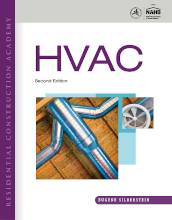
Publisher Cengage
Published May 12 2011
ISBN 9781439056349
Pages 608
Format Hardback
HVACR 101, 1st edition
Author Joseph Moravek
Aimed at beginners with a strong emphasis on real world HVACR work this book makes an excellent introductory text for students starting a course or studying for the EPA certification. HVACR 101 is the first of a series of books, each containing increasing depth and complexity as they explain practical and useful industry topics. Each chapter contains descriptions of issues you may find when working with HVACR equipment as well as end of chapter review questions, with answers to questions at the end of the book. This is one of those books that should be on every students book shelf. Highly recommended.
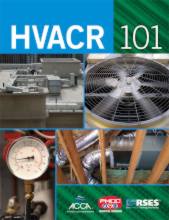
Publisher Cengage
Published July 02 2008
ISBN 9781418066635
Pages 464
Format Paperback
HVACR 201, 1st edition
Author John Hohman
Following on from the excellent first title in this series this book expands on the existing material in more depth. Like its predecessor HVACR 201 contains information based on real world work in the HVACR field, ensuring the book will be useful long after a students training has finished. Starting with a review of essential HVACR topics the book covers electrical systems and controls with useful case study examples, going on to explain mechanical troubleshooting and installation topics. Throughout the book there are tips drawn from professional field experience as well as review questions with answers at the end of the book. This book would be ideal for the intermediate student who will likely continue to find it useful when starting work in the field. Highly recommended.
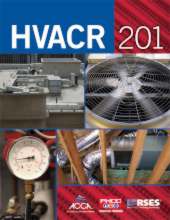
Publisher Cengage
Published June 17 2009
ISBN 9781418066642
Pages 464
Format Paperback
General HVAC study
Modern Refrigeration and Air Conditioning, 21st edition
Author Andrew D. Althouse, Carl H. Turnquist, A.F. Bracciano, D.C. Bracciano, and G.M. Bracciano
Intended to be the standard textbook for HVAC students Modern Refrigeration and Air conditioning covers all topics in an easy to understand way. The 20th edition was updated to include a new careers chapter as well as a safety chapter. It also has many technical updates including 300 new illustrations.

Publisher Goodheart-Willcox
Published August 29 2019
ISBN 9781635638776
Pages 1604
Format Paperback
Read sample chapters:
Chapter 17 Chapter 32Fundamentals of HVACR, 3rd edition
Author Carter Stanfield, David Skaves
This is one of the few HVACR textbooks that should be considered a standard work for HVAC students and technicians. Almost everyone starting in the field should have a copy. The publisher claims it is comprehensive enough to be used as the basis for a full HVACR course. This third updated edition now includes chapters on electrical troubleshooting, mini-split, multi-split and variable refrigerant flow systems, and motor controls. Sections on digital gauges, nitrogen brazing, and confined space safety have been expanded.
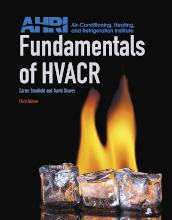
Publisher Pearson
Published January 17 2016
ISBN 9780134016160
Pages 1552
Format Paperback
Refrigeration and Air Conditioning Technology, 9th edition
Author Eugene Silberstein, Jason Obrzut, John Tomczyk, Bill Whitman, Bill Johnson
In every technical field there are a few textbooks that become all time classics that everyone in the field either does or should own. This is one of those books for people working with HVAC equipment. This is a book to keep once you have gained your certification as it will be a useful reference when you are working.

Publisher Cengage
Published January 01 2020
ISBN 9780357122273
Pages 1728
Format Hardback
HVACR 301, 1st edition
Author John Hohman
Building on the previous two books in this series HVACR 301 is firmly based in the real working environment of the HVACR trade. Aimed at students starting work experience or those leaving training for a job in the field this book provides a solid understanding of real world HVACR work. Each chapter contains a thorough walk-through of the topic alongside real world problems and end of chapter review questions with answers to questions at the end of the book. Students just starting out may prefer to review the previous books before reading this one as it assumes the reader has a strong working level of HVACR understanding. Experienced technicians will find this book useful as well as those just starting their career, this is a book to keep after your training. Highly recommended.
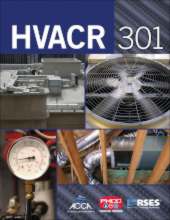
Publisher Cengage
Published May 10 2010
ISBN 9781418066666
Pages 464
Format Paperback
HVACR 401, 1st edition
Author John Hohman
Continuing on from the first three books in this series HVACR 401 is the first to concentrate in depth on a single topic. The book covers heat pumps and as with the previous books expands on the material within the preceding book. The book is aimed at students in the final stage of training, apprentices, and those beginning work in the field. Starting with a review of heat pumps and the refrigeration cycle the book continues on to expand on heat pump system components, electrical schematics, and maintenance. The final chapters cover geothermal, ground source, and water source heat pumps. As with previous books there are many field examples and review questions with an answer key at the end of the book. Highly recommended.

Publisher Cengage
Published May 09 2011
ISBN 9781428340022
Pages 378
Format Paperback
Read sample chapters:
Chapter 1General HVAC reference
Industrial Refrigeration Handbook, 1st edition
Author Wilbert Stoecker
Industrial Refrigeration Handbook is the distilled wisdom, learning, and experience of an expert in the field. It is not an entry level text, but instead aims to cover the harder, higher level theory and concepts not found in more general textbooks. While the book has not been recently updated to cover newer refrigerants this should not dissuade you from buying this book as it has very good coverage of fundamental theory and its application. Readers of this book will need at least a college level understanding of algebra to fully understand the math topics in the book. If you are serious about understanding industrial refrigeration then this book should be on your shelf.
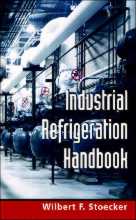
Publisher McGraw Hill
Published January 01 1998
ISBN 9780070616233
Pages 800
Format Hardback
HVAC and Refrigeration Systems, 1st edition
Author Ronnie J. Auvil
A solid technical reference for technicians working on residential and light commercial systems. The main focus of the textbook is to provide an understanding of the procedures for installing, servicing, and troubleshooting all residential and light commercial HVAC systems. The Author Ron Auvil also writes for HVAC News and is a technical contributor for Fluke Corporation, having worked for the Pentagon, The University of South Carolina, Georgia Tech, Gulfstream Aircraft, Boeing, and NASA.

Publisher American technical publishers
Published September 27 2013
ISBN 9780826907851
Pages 1289
Format Hardback
Read sample chapters:
Unit 40Commercial Refrigeration for Air Conditioning Technicians, 3rd edition
Author Dick Wirz
This 3rd edition of Commercial Refrigeration for Air Conditioning Technicians is perfect for the experienced technician starting work in the food service industry. It helps you use your existing knowledge to work on medium and low temperature food service refrigeration equipment. New in this edition is a much expanded chapter on Supermarket Refrigeration as well as additions to the chapters on Compressors, Controls and Accessories, and Troubleshooting. Highly recommended.
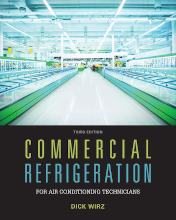
Publisher Cengage
Published January 15 2017
ISBN 9781305506435
Pages 432
Format Hardback
Read sample chapters:
Chapter 6Heat pumps, 2nd edition
Author Eugene Silberstein
Covering air source, water source, and geothermal heating pump technology Heat Pumps is written by one of the authors of the popular Refrigeration and Air Conditioning Technology. The second edition contains information on green building code as well as fifteen chapters on troubleshooting.
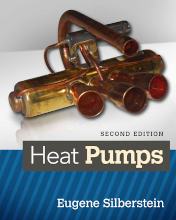
Publisher Cengage
Published July 20 2015
ISBN 9781305081635
Pages 662
Format Hardback
Read sample chapters:
Chapter 10 Chapter 11 Chapter 18MVAC
Federal clean air act section 609 training manual & Exam, 1st edition
ESCO one of the largest training organizations for EPA section 608 and 609 testing have long published this classic book for technicians studying for their EPA 609 card before moving onto ASE training. This book is short but dense, intended to provide just enough training to pass the test. You can purchase the book directly from ESCO inside a training packet alongside the return by mail test. ESCO also provide a free PDF download of the training manual which we recommend you read first. The test can then simply be booked and completed online on the ESCO site.
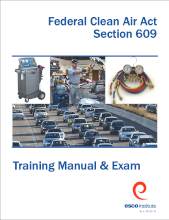
Publisher ESCO institute
Published September 26 2016
ISBN 9781930044050
Pages 17
Format Paperback
Read sample chapters:
Auto Heating and Air Conditioning, 5th edition
Author Chris Johanson
Aimed at technicians studying for the ASE tests Auto Heating and Air Conditioning is a new revised edition of the popular automotive MVAC textbook. Written by an ASE master technician who has also authored several other ASE textbooks in the Goodheart-Willcox ASE range. The book covers the topics in the ASE education foundation task list for the A7, heating and air conditioning test. This is a detailed and authoritative book for those training to be an ASE technician.
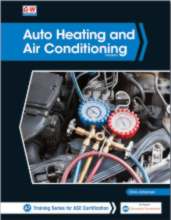
Automotive Heating and Air Conditioning, 8th edition
Author James D. Halderman
Covering the complete range of topics for the ASE education certification heating and air conditioning test this book has been revised to expand on R-1234yf refrigerants, engine coolants, HVAC inspection procedures, and sealant filters. Case studies have been added to several chapters to expand on real life troubleshooting techniques.
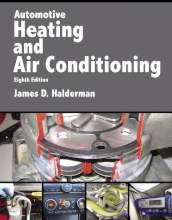
Publisher Pearson
Published January 15 2017
ISBN 9780134603698
Pages 272
Format Paperback
Modern Diesel Technology: Heating, Ventilation, Air Conditioning & Refrigeration, 2nd edition
Author John Dixon
Intended as a textbook for diesel technology programs Modern Diesel Technology is ideal for technicians staring work on truck HVACR. Covering the details of truck heating, air conditioning, engine cooling, and truck-trailer refrigeration the book even includes the history of HVACR in the truck industry.
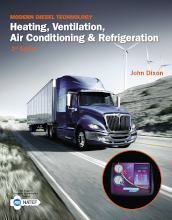
Publisher Cengage
Published January 01 2013
ISBN 9781133716259
Pages 352
Format Paperback
Read sample chapters:
Chapter 13Refrigeration history
Refrigeration: A History, 1st edition
Author Carroll Gantz
From storing winter ice and the ingenious evaporative cooling methods to the invention of modern refrigeration this book covers a huge swathe of history most are unaware of. Refrigeration: A History tells the story of the many methods devised to keep food from spoiling by keeping it cold. Moving from ancient history to the American ice harvesting trade and early ice machines and eventually to the modern refrigerator this book is a fascinating look at how we came to be where we are today.
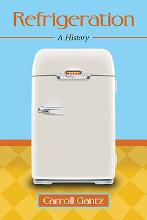
Publisher McFarland & Company
Published May 30 2015
ISBN 9780786476879
Pages 280
Format Paperback
Chilled: How Refrigeration Changed the World and Might Do So Again, 1st edition
Author Tom Jackson
We take the "cold chain" our food is stored and travels in for granted now, but the story of how we got here today is a fascinating one told well in this entertaining journey through the history of refrigeration. Chilled: How Refrigeration Changed the World and Might Do So Again takes us from early attempts to cut and store ice right up to super cold superconductors in science experiments.
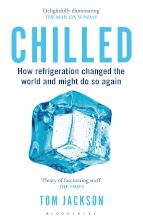
Publisher Bloomsbury Sigma
Published October 04 2016
ISBN 9781472911445
Pages 272
Format Paperback
Read sample chapters:
Chapter 1Cool: How Air Conditioning Changed Everything, 1st edition
Author Salvatore Basile
It is the technology that has become ubiquitous in American life, fitted in each home, workplace, and school. It has changed the expectation that American people have to simply endure the weather in summer. Air conditioning the background to modern life. The path to today was not always a smooth one however. Inventors initially struggled to perfect the equipment we now take for granted. Once they had it was tough to convince the public of the need to be cool in the summertime. This book presents the funny and dramatic history of air conditioning.
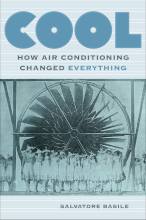
Publisher Fordham University Press
Published June 01 2016
ISBN 9780823261765
Pages 288
Format Paperback
Harvest of the Cold Months, 1st edition
Author Elizabeth David
Concentrating on the early days of food refrigeration this is the last book the famous food writer Elizabeth David was working on at the time of her death in 1992. Harvest of the Cold Months is truly global in scope and epic in scale, concentrating on the ice trade in antiquity to the early days of refrigeration. There is an abundance of fascinating detail about the type of foods requiring ice houses and the wealthy people who could afford such luxury in the past.
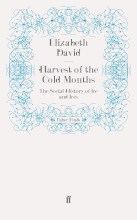
Publisher Faber & Faber
Published May 05 2011
ISBN 9780571275311
Pages 440
Format Paperback
Refrigeration Nation: A History of Ice, Appliances, and Enterprise in America, 1st edition
Author Jonathan Rees
In his book Refrigeration Nation, Jonathan Rees recants the history of refrigeration in the USA and explains how the continuing development of cold storage changed the eating habits of a nation. Refrigeration has had a huge but largely unseen impact on the development of the country from the way it expanded the markets of farmers to the length of time could be kept before spoiling. Although Rees main focus is America he does make several interesting comparisons between refrigeration in the US and other countries.
